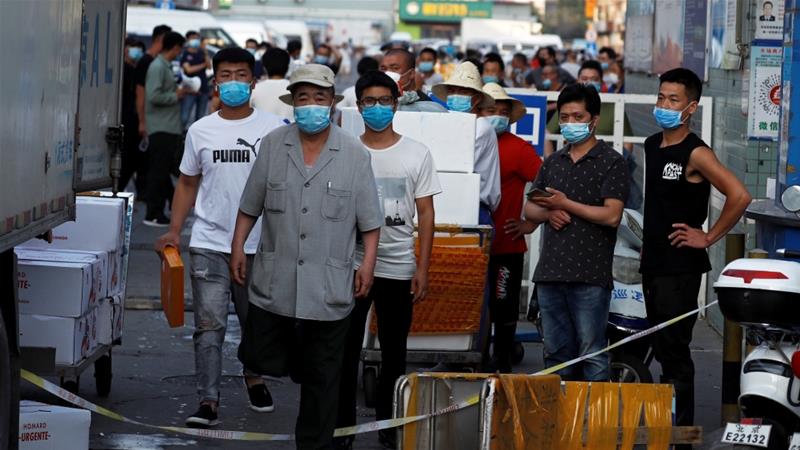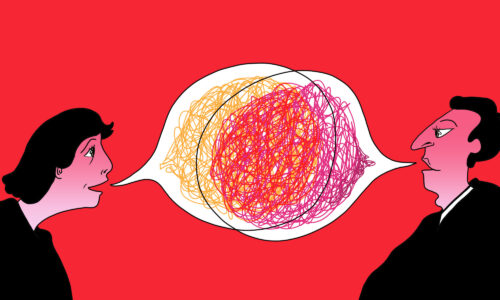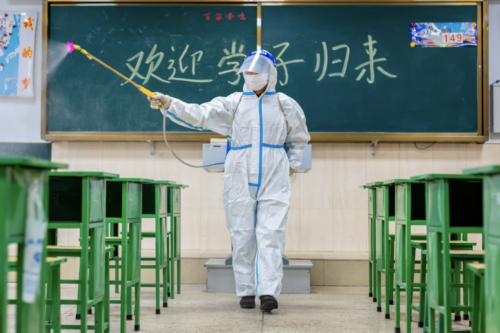How Beijing got to zero new COVID-19 cases — twice
Mass batch testing, contact tracing, and taking science seriously: Possible lessons for the U.S. in how to effectively eliminate COVID-19.

In early June, COVID-19 returned to Beijing, resurfacing in Xinfadi market in the southwestern part of the city. More than 10,000 people work at the market, which supplies 90% of the city’s fruits and vegetables.
Fear surged, as did cases — nearly 400 people over this monthlong time span tested positive. But within 26 days — as of this past Tuesday — Beijing’s reported new cases hit zero. For the second time this calendar year, it seems, this city of 21 million people beat COVID-19.
How did Beijing do it, and are there potential lessons for the U.S.?
The second part of the question is perhaps easier to answer: No. Unless Americans are willing to trust authorities — if not science — and be willing to give up a lot more freedom of movement.
In Beijing, the government deployed a containment strategy that has been described as “warlike,” featuring aggressive testing and strategic lockdowns.
Testing stations were set up at hospitals, park entrances, stadiums, and community centers. Supermarket workers, restaurant employees, and health care personnel were required to be tested. Individuals who had been within a certain vicinity of the Xinfadi market within a specific time period received automated messages urging an immediate test. Those exiting Beijing were required to register a negative test result within the past week.
China relied on targeted testing at breakneck speeds to rein in the new outbreak, at one point processing swabs from over 1.1 million people in less than a week. According to Páng Xīnghuǒ 庞星火, deputy director of the Beijing Center for Disease Control and Prevention, the city has tested more than 11 million people since June 11.
Officials reported on June 24 that China has the capacity to test 3.8 million samples nationwide every day, which ranks among the fastest speeds of any country in the world. In COVID-19 testing per capita, the U.S. lags significantly behind China and South Korea. As of early March, the U.S. tested 1,707 people, which is five tests per million people. Around the same time, Guangdong tested 320,000 of its population of 113 million, i.e., 2,820 tests per 1 million people. Again, that’s 2,820 to 5. South Korea boasts a testing capacity of nearly 4,000 tests per million people.
China achieves these unprecedented speeds using batch testing, which simultaneously evaluates multiple samples at once.
Given Beijing’s financial and political prominence, authorities did not lock down the capital city entirely. Instead, they targeted apartment blocks and housing complexes located close to Xinfadi. In those areas, only one member of each household was permitted to go outside to purchase necessities. Nearby schools and entertainment venues were also closed.
This response, however effective, tests the mettle of the people, and isn’t always fully embraced.
One Weibo user, in a post that has received broad attention, expressed frustration at the strict lockdown measures, which made it difficult for many residents to buy food. “The neighborhood has imposed fully sealed-off management and nobody knows what to do.”
Another commenter pointed out: “Adults can get by, but what about children and old people? Couriers can’t get close, and friends and relatives outside can’t send in assistance either.”
A timeline of Beijing reaching zero cases
June 11:
After more than 50 days without new cases in Beijing, municipal authorities confirm an outbreak of new infections in the southwestern district of Fengtai, confirming that 158 people in the city test positive for the disease. The city initiates a comprehensive campaign to test, according to local health officials, the 356,000 people who have visited the market since May 30.
June 13:
53 people in Beijing test positive for the coronavirus.
Local authorities provisionally shut down Xinfadi. Fengtai District implements a “wartime mechanism,” as described by state-controlled broadcaster CGTN. District officials also establish a central command center to curtail this sudden reemergence. City officials shutter 11 nearby residential communities and close schools that had previously reopened.
As Beijing authorities scramble to trace the source of the latest outbreak, China’s message to the rest of the world remains the same: The virus is under control.
The government-backed media outlet Global Times posts a video of armed police officers patrolling the market.
June 18:
Wu Zunyou, the chief epidemiologist at China’s Center for Disease Control and Prevention, declares that the Beijing outbreak is “under control.”
“Newly diagnosed cases reported every day does not equal new infections and the outbreak being under control doesn’t mean there will be zero new cases tomorrow,” Wu said.
June 19:
25 new infections are announced, which increases Beijing’s total to 183 infections.
June 22:
Beijing reports 13 new coronavirus cases, raising the citywide total to 249 infections.
June 27:
China reports 17 new cases of COVID-19 nationwide, 14 of which come from the recent resurgence in Beijing.
June 29:
400,000 people of Anxin County in Hebei Province, which borders Beijing, are placed under strict lockdown.
July 6:
Beijing reports zero cases, although officials remain on high alert. “Zero new cases does not equal zero risk,” Pang said in a press briefing Tuesday. Officials maintain that they do not plan to ease restrictions until Beijing marks two weeks without any new cases, though many bars and restaurants are currently operating.
July 8:
Beijing reports zero cases, marking the third straight day of no new positive cases.






